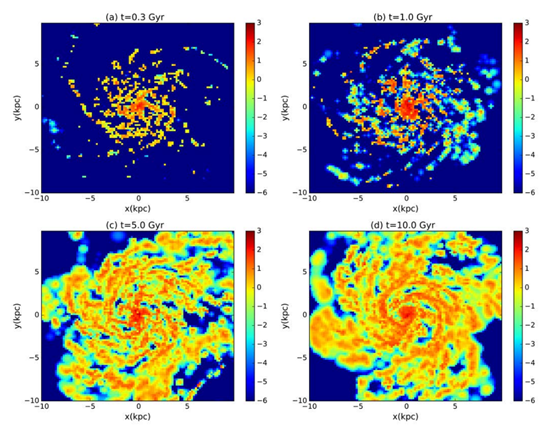|
Home \ Research
Research Highlights
Update [Login required]
| Simulation of dust and molecules in a disk galaxy |
|
Image Credit: Chen, Hirashita, Hou, Aoyama, et al.

Distribution of molecular gas surface density
|
| Molecular gas is considered to trace star formation activity in galaxies, and galaxy evolution is driven by star formation. Therefore, clarifying the evolution of molecular gas content in galaxies is essential in understanding galaxy evolution. We calculated the distribution of hydrogen molecules (H2) in a galactic disk based on our hydrodynamical simulation (Chen, Hirashita, Hou, Aoyama, et al. 2018). Since H2 forms on dust grains, it is important to calculate the evolution of dust abundance in the simulation. The figure shows the H2 distribution at various ages (0.3, 1, 5, and 10 giga-year; Gyr). The galaxy is enriched with dust as time passes; that is, an older galaxy is richer in dust content. Accordingly, the system is rich in H2 at old ages. Since H2 traces dense regions where stars form at old (> 1 Gyr) ages, H2 is a good tracer of star formation unless the galaxy is younger than 1 Gyr. In other words, we find that molecular gas is not a good tracer of star formation in young galaxies. We also calculated CO, whose emission is usually used to trace the molecular content in galaxies. We found that the age dependence of CO is more enhanced than that of H2, which means that CO cannot be a useful tracer of dense regions (or star-forming regions) in dust-poor environment. |
|